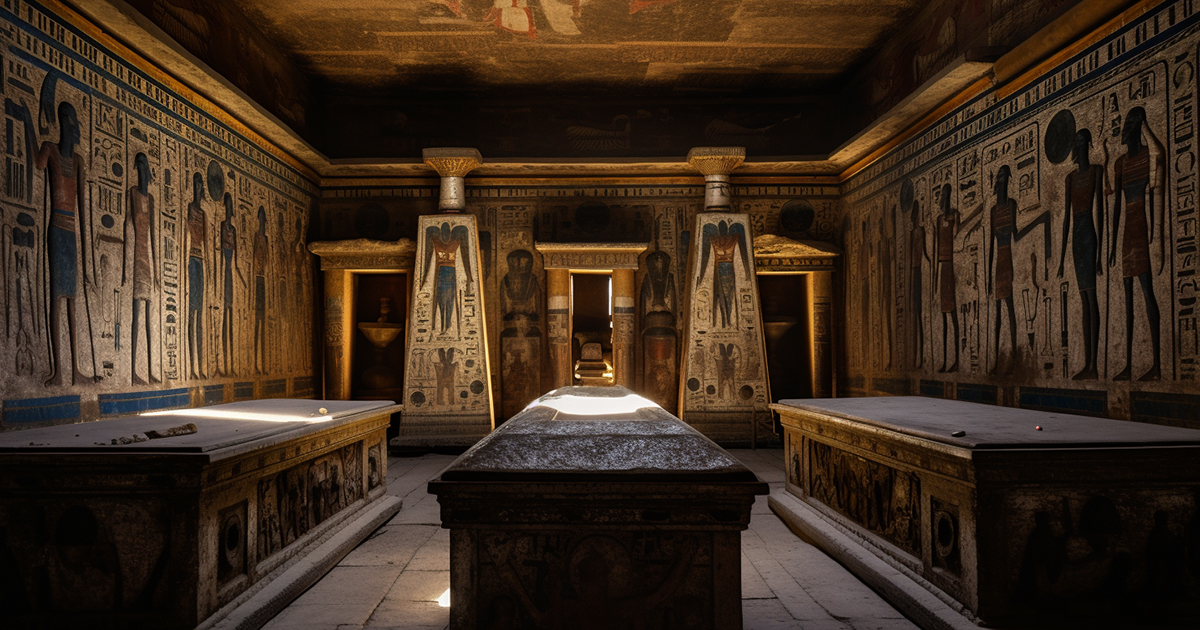Introduction
Deep within the Valley of the Kings in Egypt, the majestic Taj Mahal in India, and the enigmatic tomb of King Pakal in Palenque, Mexico, lie ancient burial sites that have puzzled researchers for centuries.
These monuments, dating back thousands of years, have traditionally been seen as the final resting places of revered leaders. However, could there be more to these awe-inspiring structures than meets the eye? This article delves into the intriguing idea that these tombs might have served a deeper, possibly extraterrestrial, purpose.
Beyond the Veil of Mortality
While conventional wisdom dictates that tombs are primarily designed to house the remains of the deceased, it’s curious to note that most of these ancient sites are intricately linked to concepts of spiritual energy, astronomical imagery, and a firm belief in the existence of higher, spiritual realms.
Across various cultures, there exists a common thread—a belief in the act of opening a gateway or portal to another dimension, allowing the soul to embark on its journey to the afterlife.

Throughout the ancient world, a prevailing notion held that our earthly existence was a preparation for a greater destiny that awaited us beyond life’s confines. But what if these tombs were more than mere vessels for the dead? Could they have acted as portals facilitating a reunion between the deceased and celestial beings?
Unlocking the Secrets of Ancient Egypt
To explore these tantalizing possibilities, many ancient astronaut theorists have turned their attention to the cryptic texts of ancient Egypt. Among the most intriguing sites is Saqqara, situated on the west bank of the Nile River, just south of Cairo. Egyptologists may refer to these structures as tombs, but to the ancient Egyptians, they were gateways to the afterworld—a portal through which the pharaoh embarked on a perilous journey into the underworld.
Facing obstacles, dangers, and threats in the afterlife, the pharaoh had to overcome these challenges to earn passage into the kingdom of Osiris. Overlooking this vast necropolis is the pyramid of King Teti, the ruler of Egypt’s sixth dynasty more than four millennia ago. This pyramid holds a treasure trove of ancient wisdom—the Pyramid Texts.

The Pyramid Texts: A Celestial Guide
Archaeologists believe that the Pyramid Texts, dating back to 2400 BC, contain passages dedicated to Osiris, the Egyptian god of the afterlife. These texts provide instructions on how to prepare the pharaoh’s remains for their celestial journey.
However, for ancient astronaut theorists, these texts go beyond guiding the pharaoh to the afterlife; they offer insights into interstellar travel.
The Pyramid Texts, according to these theorists, hold clues about connecting with otherworldly entities. They suggest that around 25,000 years ago, gods lived among the ancient Egyptians, but then vanished.
The Pyramid Texts propose that in death, the ancient Egyptians could once again commune with these divine beings. In essence, they outline a form of interdimensional travel for the soul.
Video:
Conclusion
While the mainstream view regards these ancient tombs as mere resting places for earthly leaders, there is an undeniably mystic dimension to their existence. The Valley of the Kings, the Taj Mahal, and King Pakal’s tomb, along with the Pyramid Texts, all hint at a deeper connection between ancient civilizations and the cosmos.
Whether one embraces these ideas as historical fact or intriguing speculation, there’s no denying the enduring allure of these ancient enigmas. They continue to beckon us to explore the hidden, transcendent truths they may hold, unlocking the mysteries of our human history and our place in the universe.

23 thoughts on “The Mystical Significance of Ancient Egyptian Tombs”
Comments are closed.